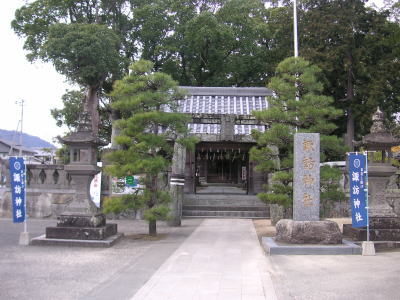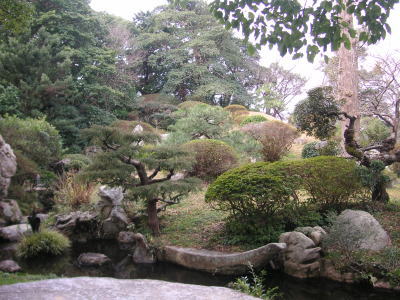|
|||||||
The Legend of Princess Suwa |
|||||||
| Hello, friends. Spring is here, and I awoke from hibernation of 3 cold
months! On a fine day of early spring, I jumped out of my room and visited Suwa-Jinjya (shrine) in Hamasaki town of Karatsu City. It is only 15 minutes' ride from Yoyokaku. It is because of a legend of Suwahime (Princess Suwa). I have told you about another legend of Sayohime on #102 of this issue. This time I would like to write the story of Suwahime. Suwahime and Sayohime both lived about 1500 years ago. And just like Sayohime, Suwahime's story has a deep relationship with Korea at that time. I hope you will enjoy this story.
First, from Wikipedia, please confirm the word Baekje. |
|||||||
|
Baekje or Paekche (Hangul: 백제; Hanja: 百濟, Korean pronunciation: [pɛk̚tɕ͈e]) (18 BCE – 660 CE) was a kingdom located in southwest Korea. It was one of the Three Kingdoms of Korea, together with Goguryeo and Silla. Baekje was founded by Onjo, the third son of Goguryeo's founder Jumong and So Seo-no, at Wiryeseong (present-day southern Seoul). Baekje, like Goguryeo, claimed to succeed Buyeo, a state established in present-day Manchuria around the time of Gojoseon's fall. Baekje alternately battled and allied with Goguryeo and Silla as the three kingdoms expanded control over the peninsula. At its peak in the 4th century, Baekje controlled some colonies in China and most of the western Korean Peninsula, as far north as Pyongyang. It became a significant regional sea power, with political and trade relations with China and Japan. In 660, it was defeated by an alliance of Silla and Chinese Tang Dynasty, submitting to
Unified Silla. |
|||||||
The Legend of Suwahime |
|||||||
| More than 1500 years ago, Japan was in the Yamato Era, and in the Korean
Peninsula, there were three kingdoms of Goguryeo, Silla and Baekje. In
the 6th century, Baekje was gradually getting weak, and allied with Japan
to fight against Goguryeo. Seen from Japan, Baekje was an advanced country,
and its culture and technology was a goal to be imitated. So missionaries were often sent to Baekje. Karatsu is located at the nearest point to the Korean Peninsula, so it served as the gateway to and from Korea. When the ships to Korea set sail, people came to this Shrine and prayed for its success of the mission. One day, the Kingdom of Baekje sent a missionary to donate some presents to the Dynasty of Yamato. One of the Korean members was a young man named Sairai. Sairai was a falconer. His mission was to deliver a hawk to the Yamato dynasty. At that time, the art of hawk using had not been introduced to Japan. Yamato dynasty sent a noble princess to receive and learn the skill of falconer. The Princess and Sairai spent many hours a day together, teaching and learning. Gradually, the two fell in love with each other. Living in the Suwa Shrine, the Princess was called Suwahime, the Princess of Suwa. Suwahime and Sairai always went out together to train the hawk. One day, Suwahime and Sairai went to the beach behind the shrine. They started to train the hawk, and the hawk flew up high into the sky. Then, it swooped down. What did it find? The hawk landed in a field of beans. Long time passed. The hawk did not come back to them. They searched for the hawk in the bean field. What they found was the hawk killed by a pit viper. Suwahime grabbed some sand nearby, and threw it to the pit viper. The pit viper left the place without harming the two people.
For Sairai and the hawk, there are two small shrines at the back of the main building of the Suwa Jinjya. It seems that Sairai is still guarding Suwahime from the back.
Long time passed. In this district, people do not make beans in their fields, because of this legend. And the sand of this beach is thought to be effective to get rid of pit vipers, and also many kinds of bad fortune. |
|||||||
|
|
|||||||
When north wind blows, on the beach of Hamasaki, many trashes float from Korea. Juice bottles, soap bottles, plastic cases with signs of Korean language. One day I even found an adbaloon with a tag of a department store. These things remind me how near the country is. No wonder why there is an intimate relationship between this district and Korean Peninsula. The sea is not changed at all from the time of Suwahime and Sairai, sometimes separating and sometimes unifying the two nations of Korea and Japan. Someday I will again tell you about other sad histories between the two countries. Thank you so much for reading this. I hope you will give a warm thought to Suwahime. See you next month. |
|||||||
|
|||||||




